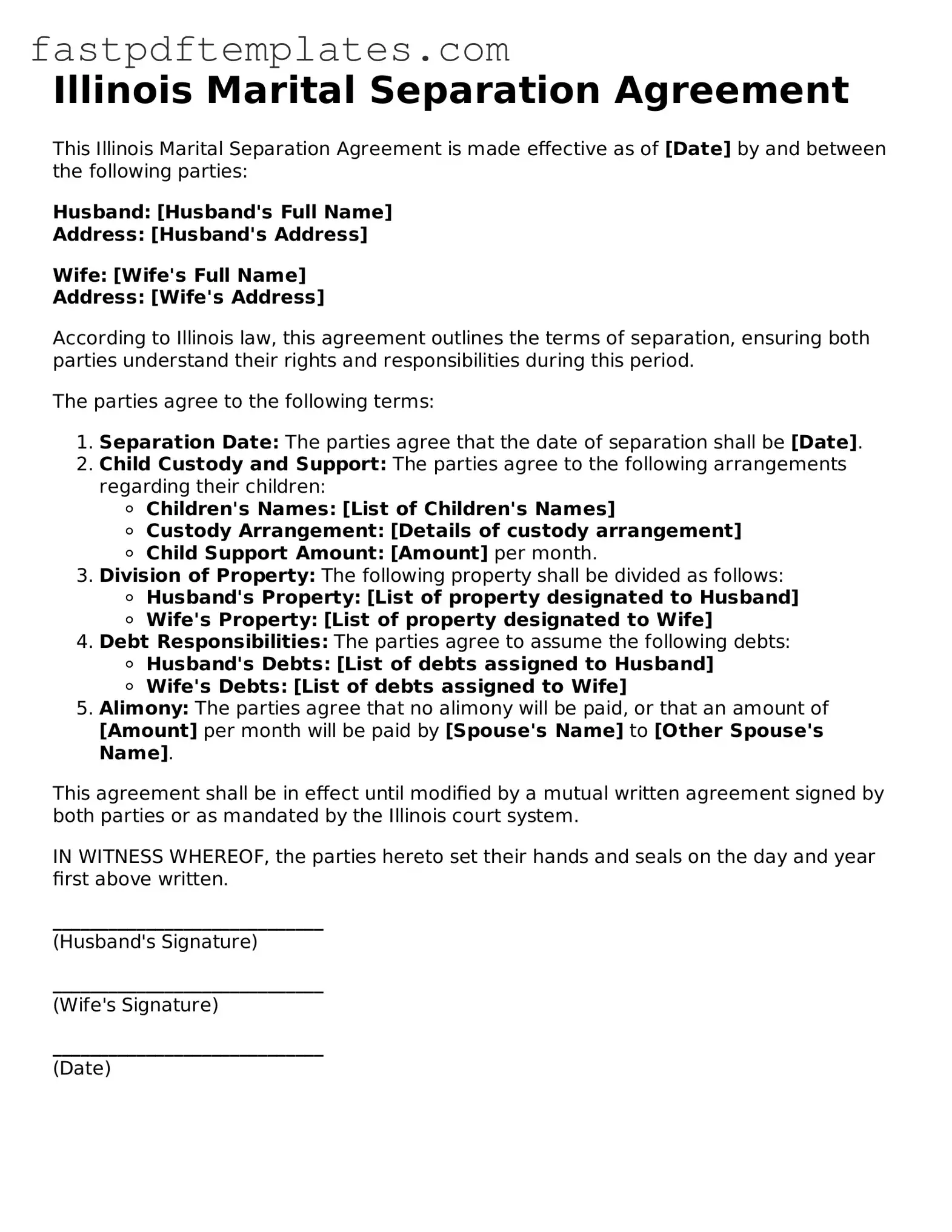The Illinois Marital Separation Agreement is similar to a Divorce Settlement Agreement. Both documents outline the terms of the separation or divorce, including the division of property, spousal support, and child custody arrangements. A Divorce Settlement Agreement is typically used when the couple has decided to end their marriage entirely, while a Marital Separation Agreement allows them to live separately without formally dissolving the marriage. Both documents aim to provide clarity and mutual understanding, reducing potential conflicts in the future.
Another document that resembles the Marital Separation Agreement is the Separation Agreement. This document is often used in various states and serves a similar purpose: to delineate the rights and responsibilities of each spouse during their separation. Like the Illinois version, a Separation Agreement can cover financial arrangements, child support, and custody issues. The key difference lies in the jurisdiction and specific legal requirements that may vary from state to state.
The Cohabitation Agreement also shares similarities with the Marital Separation Agreement. While this document is generally used by unmarried couples living together, it outlines the rights and responsibilities of each partner. Like the Marital Separation Agreement, it can address property division and financial matters. Both agreements aim to protect the interests of the parties involved, ensuring that there is a clear understanding of each partner's obligations.
The Prenuptial Agreement is another document that bears resemblance to the Marital Separation Agreement. Although typically created before marriage, a Prenuptial Agreement can also outline how assets and debts will be divided in the event of a separation or divorce. Both agreements focus on financial matters and aim to prevent disputes. However, a Prenuptial Agreement is proactive, while a Marital Separation Agreement is reactive, addressing issues after the couple has decided to separate.
The Child Custody Agreement is similar in that it specifically addresses the custody and visitation rights of children involved in a separation or divorce. While the Marital Separation Agreement may include provisions for child custody, a Child Custody Agreement focuses solely on the best interests of the child. Both documents aim to provide a clear framework for parenting responsibilities, ensuring that the needs of the children are met during a potentially tumultuous time.
The Property Settlement Agreement also shares characteristics with the Marital Separation Agreement. This document specifically addresses the division of marital property and debts. Like the Marital Separation Agreement, it seeks to clarify how assets will be divided, ensuring that both parties understand their rights and responsibilities. While the Marital Separation Agreement may cover a broader range of issues, the Property Settlement Agreement hones in on financial matters.
The Parenting Plan is another document that aligns with the goals of the Marital Separation Agreement. It focuses on the arrangements for raising children post-separation. While the Marital Separation Agreement may include general parenting provisions, a Parenting Plan goes into greater detail about visitation schedules, decision-making responsibilities, and communication between parents. Both documents aim to create stability for children during a time of change.
Lastly, the Legal Separation Agreement is closely related to the Marital Separation Agreement. In fact, in some jurisdictions, these terms are used interchangeably. A Legal Separation Agreement formalizes the separation process, allowing couples to live apart while still being legally married. Like the Marital Separation Agreement, it can cover a wide range of issues, including property division, spousal support, and child custody. Both documents provide a legal framework for couples navigating the complexities of separation.
